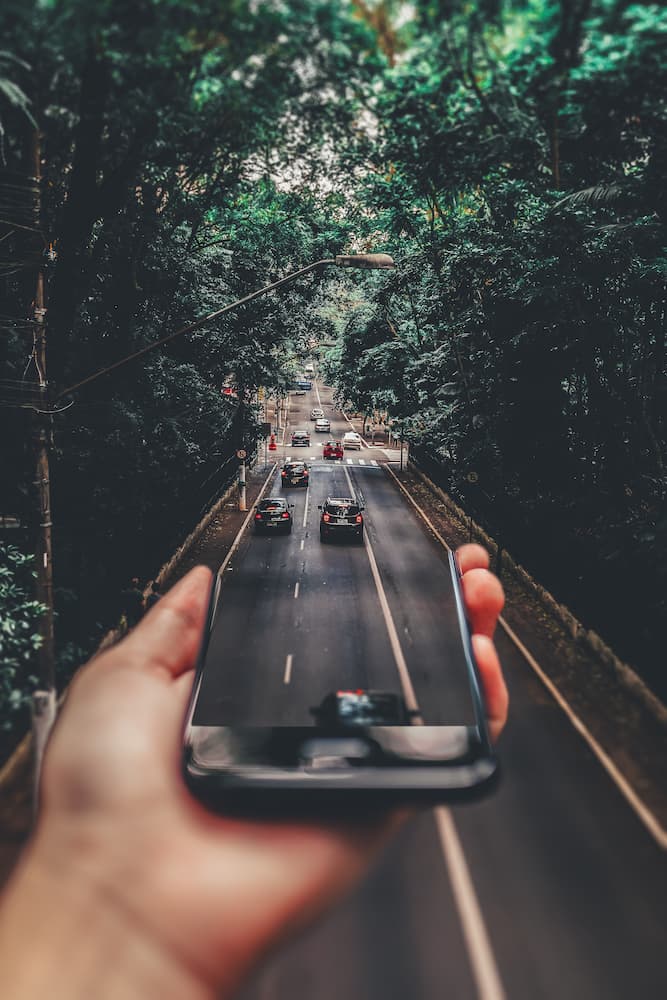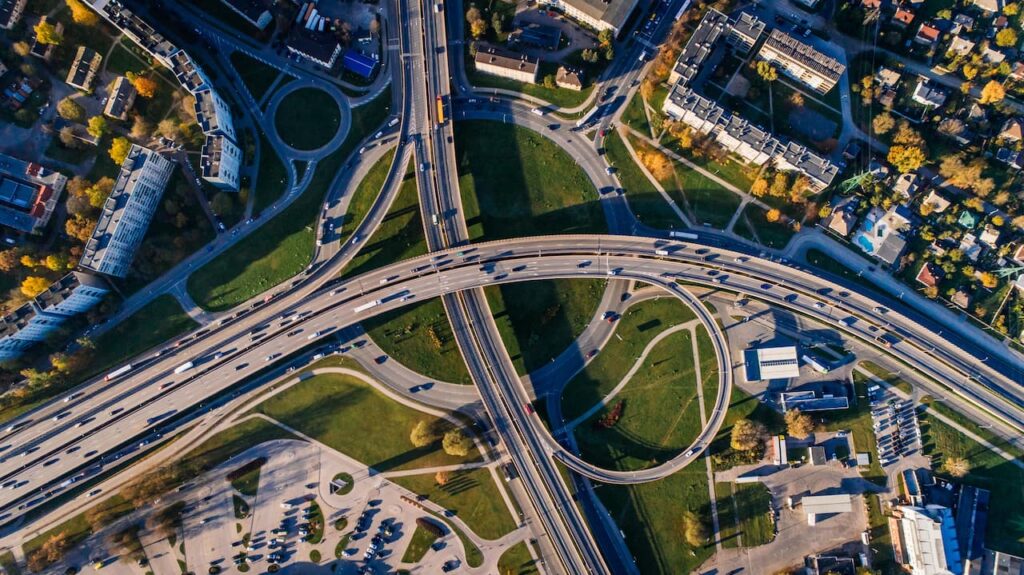The United States of America – the land of freedom and the dream of millions of foreigners – stretches over 9.5 million km and is the fourth largest state in the world; how to move around the USA – and how developed and convenient their transport system is, we will learn in this article.
Briefly about the main
The vast territory of the United States, the diversity of its landscapes, the successive climatic zones – all this necessitates a developed transport system, convenience and comfort of moving around the state.
Indeed, American roads are a world standard of quality, an inviolable standard and true romance of travel.No wonder it was in America that the genre of “road movie” was born, that is, “road movie”.Famous highways and their intersections, a comfortable rhythm of travel, a developed network of gas stations and motels, convenient parking lots and cafes along the way – all this gives the motorist real pleasure from the road.The total length of highways in the United States is the largest in the world and exceeds 6 million km, and the number of expressways is more than 75,000 km.Traffic jams?Undoubtedly.As in any large city in the world, this problem is very urgent in the states, and the authorities are constantly taking measures to improve the road infrastructure.
At the intersection of the most important highways of the United States, large transport hubs have formed, the largest of which is unambiguously Chicago.Also, these are port cities – New York, Philadelphia, Baltimore, New Orleans, Houston on the Atlantic coast and Los Angeles, Seattle, San Francisco – on the Pacific coast.
The car is the main mode of transportation for Americans.The rights of citizens of the country are officially issued at the age of 16, and from the age of 15 a car can be driven in the presence of an adult passenger.This is due to the fact that in most places in America, the public transport system is poorly developed, and moving from point A to point B requires your own vehicle.If in Russia an adult who does not know how to drive a car is rather a given, then in the USA it is definitely a rarity and a reason for surprise.So if you are planning a trip to America outside of major cities, then do not forget to take your license with you.
In the US, you drive on the right, and each state in the country has its own traffic rules.It is better to study them in advance, as they may differ markedly from European standards.
Air travel
Domestic air travel is one of the most common ways to travel long and medium distances in the United States.Even small cities have airports that operate several domestic and international flights per day.In total, there are more than 14,000 airports in 50 states in America.For comparison, there are only 254 air harbors in our country.For Americans, air travel is quite commonplace: tickets can be purchased quickly and inexpensively, and often the plane is the cheapest and most convenient means of travel between cities and states.The flight can cost as little as $15 and last literally from a few minutes to several hours.
Rail transportation
When you think of American trains, you immediately imagine the times of the Gold Rush and bearded gold prospectors shooting buffalo from train cars.In fact, although the development of America’s railroad network has advanced markedly since those historical times, the number of roads and their popularity have greatly declined since the 1920s.Then the total length of railway tracks exceeded a record 370,000 km!Today, the American railway is still one of the longest in the world, about 250,000 km, but at the same time, the United States is not a country where it is customary to travel by train.In America, this type of transport is noticeably inferior to such widespread air and road transport.
Inexpensive and fast air travel and convenient road planning do not play into the hands of rail travel, although there are certainly convenient routes that attract passengers.These include the so-called “California Corridor” (San Diego-Los Angeles-San Francisco), the “Northern Corridor” (Washington-Philadelphia-New York-Boston), as well as a branch crossing the continent along the route New York -Washington-Memphis-Dallas-Albuquerque-Phoenix-Los Angeles.
Today in America there is a trend towards the return of the use of rail transport, including in view of the congestion of highways and airports.
The main US rail carriers are Amtrak, National Rail Pass and West Rail Pass.In the west of America, double-decker Superliner cars run predominantly – seated, compartments, etc. In the east of the country, due to the large number of tunnels, single-decker Amfleet trains mostly run.Traveling from Washington to New York in a seated car will cost at least $100, and in a reserved seat the price will be $200-300.Tourists who are not US citizens can purchase an unlimited pass for 15, 30 or 45 days.However, this Rail Pass does not guarantee the availability of seats on the route of interest, so you need to book them in advance.
US Public Transportation
The United States of America, as an advanced Western state, certainly has a developed public transport system.Which, however, has its own characteristics.First of all, it is that public transport is the prerogative of large cities.Of course, the subway, as well as a developed network of bus routes, is available in all the leading metropolitan areas of the country: New York, Washington, Boston, Dallas, Houston, Philadelphia, Chicago, Detroit, Los Angeles and many others.And, if here, in order to quickly get to the office, you just need to “dive into the subway” or wait for the desired bus flight at the bus stop, then, for example, in a remote suburb somewhere in Alabama, a personal car will definitely serve these purposes.
bus service
The bus is the second most important mode of land transport after private cars.Each of us from American films remembers the famous yellow school buses that arrive right on schedule and promptly take students to school.In general, the bus transportation system is well developed in the United States and is popular with citizens.Again, we are talking mainly about large cities and regional centers.In the provinces, people still drive private cars.
The largest carrier and the de facto monopoly of US bus transportation is theGreyhoundcompany , whose flights connect all major cities and tourist sites in the US and Canada.It is America’s oldest bus company, founded in 1914 by Swedish immigrant Carl Eric Wickman.
In terms of traffic, buses in the United States far outnumber trains.Interstate buses are equipped with air conditioning, comfortable seats, toilets, and ample luggage space.City buses are a modern form of transport, including those suitable for comfortable travel of the disabled.Long-distance bus tickets are quite expensive, but if you travel on weekdays and order a ticket about five days before the date of travel, then its price can be reduced by 25-40%.The average fare from New York to Washington, excluding promotions and discounts, is $55, Chicago-Houston is $120-140.Tourists can also purchaseDiscovery passes.for seven, 15, 30 and 60 days.The cost is from $283 to $645.This pass allows unlimited travel on any route, including Canada and Mexico.In city buses, the fare is paid to the driver and costs about $ 2.5.
Trolleybus service is carried out only in five US cities: Boston, Philadelphia, San Francisco, Seattle and Dayton.
Metropolitan
The New York City Subway is the largest underground transportation system in the world.It is he who can be considered as the standard of the “underground” of the United States.For passenger transportation, the New York subway uses more than 1,000 km of tracks, in total there are 472 stations and 25 routes.Geographically, the metro covers four districts of the city.Transportation is carried out by the MTA company, which also serves other types of public urban and suburban transport.There is also an “additional” subway that connects downtown New York, Manhattan, with nearby New Jersey cities.In America, the subway is called the “underground”, subway, although about 40% of the trains pass on the ground.A feature of the New York subway is that the routes here are divided into “high-speed”, when the train stops only at the most important stations, and local (with all stops).The cost of one trip is $2.7.A monthly pass will cost just over $100.Since 2003, the Airtrain line has been operating in the Big Apple, serving New York Airport.Kennedy.
Staten Island, the only borough in New York without a subway system, has a 24-hour passenger intercity rail line, which, like other types of urban public transport, is operated by the MTA.The road consists of a single line running along the east and southeast shores of Staten Island.To transfer to this line from the subway, as a rule, a free ferry is used, the southern terminal of which is combined with the northern terminal of the railway, St.
The youngest subway lines in the United States are Washington and Atlanta.More recently, a subway has opened in San Juan, Puerto Rico.
Taxi
Taxis are a very popular form of transportation in the US, and as elsewhere in the world, there are several options for getting around.On the streets of large cities, yellow cars ply, which do not need to be ordered in advance – and which will be taken by the meter to the desired destination.In less densely populated areas, taxis will have to be called by phone or ordered through modern applications like UBER, which are just as popular in America as they are anywhere else in the world.Payment for services is made in cash or by credit card.Most of the car cards are popular Visa, Mastercard, American Express.The fare is set per fraction of a mile or per minute, for additional funds carried large luggage, animals, assistance with loading, night trips, etc.Usually,taxi drivers do not carry large sums of money with them, so it is better to prepare the “exchange” in advance.On average, the most inexpensive taxi ride costs around $7.

Car rental
The car is the main means of transportation in the United States, and it can be easily rented upon arrival in the country.As in other countries of the world, both international rental companies and private ones operate here.
Large chains are Enterprise, Alamo, Thrifty, Budget, Avis, Hertz, Dollar and National Car.Private – located locally, have their own tariffs, a fleet of cars and often do not have their own website, so you need to negotiate on the rental already on the spot.As a rule, rental services from famous “brands” turn out to be more expensive: for example, if renting an economy class car from them costs $30-40 per day, then renting a similar brand from a local company can cost $15-20.
Shipping
In total, there are more than 40,000 km of shipping routes in the United States – straits between lakes, rivers and canals.An interesting fact: American ports are located not only by the ocean, but also on the shores of the Great Lakes, which are also called the “Third Sea Coast”.The largest US ports are in New York and New Orleans.Ferries, pleasure boats and transatlantic liners depart from major city ports, promising an interesting sea voyage.
Sea communication to America is not a very popular mode of transport, in contrast to the XVIII-XIX centuries.At the same time, passenger sea routes connect the United States with most Western European countries, as well as with Africa, Australia and the Far East.
In general, especially with careful planning, traveling in the United States can be very comfortable and very budget friendly.The main thing is to choose the style of travel and modes of transport, ordering all tickets in advance, familiarizing yourself with the routes and rules.It doesn’t matter if it’s a leisurely minivan trip to the main attractions or a fast-paced business trip in major cities, a romantic ferry ride or a convenient flight from state to state – America’s roads definitely have something to offer their passengers.
